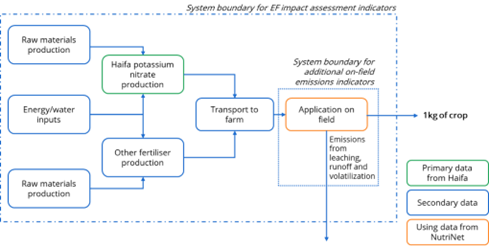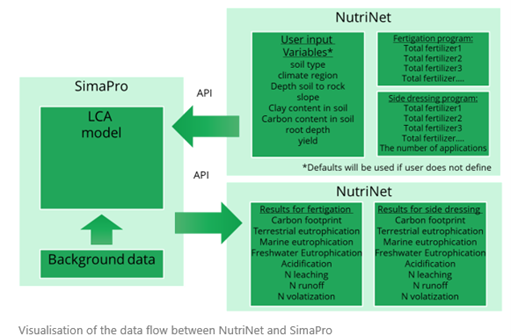Click to start using Haifa NutriNet™ Now
NutriNet's tool for assessment of the environmental impact of fertilization programs
Note: This is a short explanation about NutriNet's new tool for assessing the environmental impact of fertilization programs. To read more about the method please download the full document.
NutriNet is an online software for growers and agronomy experts that helps to create optimized fertigation programs, while taking into account the actual growing conditions. Haifa NutriNet creates a detailed and optimized fertigation program for almost any growth environment, by utilizing a comprehensive database of crop nutrition requirements.
Haifa has included in NutriNet a tool for estimating the environmental impact of fertilization programs, compared to top-soil fertilizer application. By using this new tool, our goal is to raise awareness about the environmental implications of fertilizer production and application, and encourage the use of advanced fertilizer application practices that have less of an impact on the environment. This assessment tool is intended as a high-level estimate for obtaining initial insights of the environmental impact of fertilization programs.
NutriNet calculates the difference between the environmental footprint of fertigation programs compared to top-soil fertilizer application. In both cases NutriNet uses the same field characteristics, however, fertilizer composition, amount and application method is different and thus the overall environmental footprint is different.
The environmental impact assessment of these two programs is calculated with the Life Cycle Assessment (LCA) method. LCA is a scientific method that can be used to calculate the environmental footprint of a product. Data from the NutriNet is sent directly to an LCA model in SimaPro, calculating the environmental footprint independently for each fertilization program. This assessment contains processes from the production of the fertilizer through to the harvest of the crop; theproduction of the fertilizers, transport of fertilizers to the farm, application of fertilizers with tractors, direct emissions to air, soil and water and all harvesting steps, as shown in the Figure below.

Figure 1. Visual representation showing what's included in the study and the system boundaries for the two types of impact assessment

The results of the LCA are expressed, per 1 kg of produce, for the following indicators:
- Environmental footprint single score
- Climate change (carbon footprint)
- N leaching
- N runoff
- N volatilization
- Eutrophication, freshwater
Calculation of the environmental footprint is complex and requires the use of various assumptions and secondary databases for fertilizer production. The uncertainty of the results is therefore relatively high and results should only be used as indicative and not be used for any form of external communication or certified documentation. If you seek a more accurate impact assessment of your fertilization program, contact FertigationLCA@haifa-group.com.
Note: This is a short explanation about NutriNet's new tool for assessing the environmental impact of fertilizer application programs. To read more about the method download here the full documentation.



